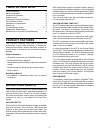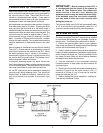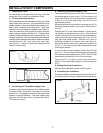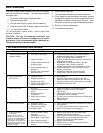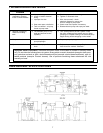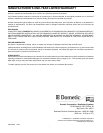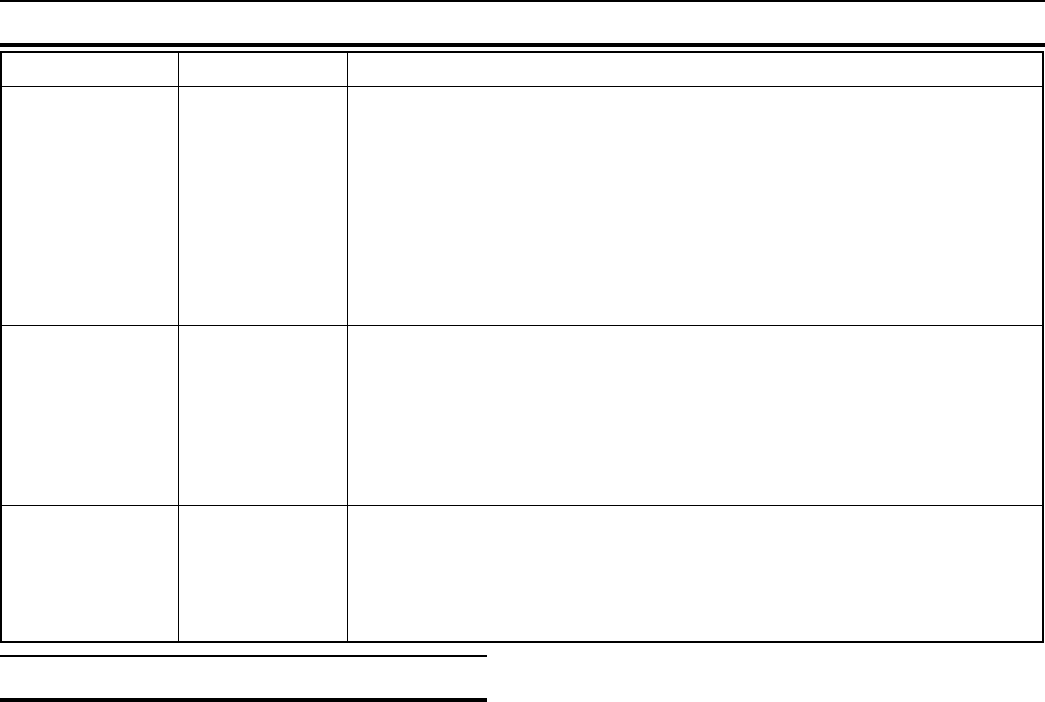
4
1. Check dimensions of mounting space above and below floor.
2. Determine best toilet discharge connection: above floor, out rear or below floor.
3. Allow at least ½-inch (1.3 cm) clearance between toilet rear and wall.
4. Make sure compartment, shower and vanity doors will clear toilet bowl.
5. Check location nearest cold water line.
6. Water line must be at least ½-inch ID and provide a minimum flow of two (2)
gallons per minute (7.6 liters per minute).
7. Water valve assembly for 106 toilet can be positioned any distance horizontally from
the toilet but must be at least 6 in. (15.24 cm) above the top of the toilet bowl rim.
8. Check clearances to side wall for installation of flush lever cover and back wall
for best clearance.
1. The vacuum holding tank (VHT) inlet must be located no more than 20 feet (6.1 m)
from the toilet discharge.
2. The VHT inlet must not be located more than 3 feet (.9 m) above the outlet of
the toilet. (NOTE: The lower the tank, the better the system efficiency.)
3. The VHT must be mounted in a horizontal position.
4. The VHT must not be exposed to temperatures over 120°F. Do not place near
heat sources such as engine manifolds, water heaters, generators, etc.
Mounting space must provide for free air flow.
1. OdorSafe Sanitation Hose must be used; it is sized to use SeaLand fittings in the
system, minimizing vacuum leakage.
2. It is important that restrictions in the vacuum hose be kept to a minimum.
Where a bend must occur in a hose run, the radius of the bend must not be
less than 6 inches (15.24 cm). If a tighter radius is required, use a SeaLand 90°
bend kit to assure a clog-free transition.
The VacuFlush system operates on a unique and un-
common principle – powerful, instantaneous vacuum
force. As a result, certain installation points must be
stressed because they are the most common sources of
incorrect installation.
1. Leaks at Fitting Joints
One benefit of vacuum operation is that leaks are inward
and will not cause drippage of sewage. Vacuum leaks
result in frequent cycling of the vacuum pump which
causes unnecessary wear on the motor and gear drive.
Most vacuum leaks occur at fitting joints. Care should be
taken to assemble fitting joints per the instructions.
Allow time in your installation schedule to give cemented
fittings, if used, time to cure before manipulating them.
Also, a proper PVC cleaner or primer must be applied
prior to cementing fittings.
2. Cementing Hose to Fittings
Never cement hose to fittings. The SeaLand custom hose
adapter is specifically designed to fit precisely into the
OdorSafe Hose. The hose will slide easily on the fitting if
it is lubricated with liquid dishwashing detergent and
twisted clockwise when attached.
3. Locating Components in Accessible Spaces
Never locate a component of the vacuum system in a
space which is inaccessible or difficult to reach.
4. Hose…Too Much, Too Little
Try to avoid unnecessary hose runs that result in
excessive bends or loops. Excessive hose reduces
vacuum transfer efficiency. Hose should be securely tied
down every three feet. Too little hose length also causes
problems by forcing the hose into tight bends or kinks.
Always leave a small amount of extra hose length for
future maintenance. The distance between the toilet and
the Vacuum Holding Tank (VHT) may not exceed 20 feet
(6.1 m).
5. Hose… Wrong Type
To complete a VacuFlush installation, OdorSafe Sanita-
tion Hose or rigid PVC pipe (Schedule 40 or heavier)
must be used.
6. Hose… Odor Permeation
Avoid low spots in hose or sections where waste will
remain for very long periods. Waste trapped in hose will
produce gases in the final stage of decomposition that
are very difficult to contain. If possible, have hose from
the toilet drain into the VHT.
7. Protecting Toilet and Preventing Objects from
Falling into System During Installation.
After mounting toilet and attaching seat and lid assem-
bly, slide seat assembly carton over seat and lid. Next,
place toilet box down over toilet. This will ensure addi-
tional protection to the toilet after installation.
Failure to follow recommended procedures that result
in any of the above problems will invalidate component
warranty.
KEY INSTALLATION POINTS
Vacuum Toilet
Vacuum Holding
Tank (VHT)
Vacuum Hose
and Fittings
COMPONENT LOCATING PROCEDURE
Component Location
Check
Bathroom
compartment or
under berth.
Any space that
permits access to
remove the entire
unit.
Use only Odor-
Safe hose and
SeaLand fittings.
They are made to
fit together.




